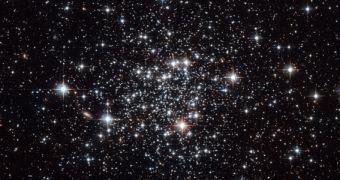Astronomers operating the NASA/ESA Hubble Space Telescope have recently released a new image of a large globular star cluster, called Terzan 7. The cosmic formation was first discovered by French-Armenian astronomer Agop Terzan, and was determined to lie just 75,000 light-years away.
This close proximity enables astronomers to study the structure in great detail. Hubble was able in the new study to focus its instruments on Terzan 7, and produce an extremely-detailed view of the cluster.
The formation contains a relatively large volume of stars, which are bound together by intense gravitational interactions. Unlike other clusters, Terzan 7 is believed to also belong to the Sagittarius Dwarf Galaxy, a miniature version of the Milky Way that was first identified just 20 years ago.
Measurements of stellar objects in the cluster have revealed that most of them were produced around the same time. The age of Terzan 7 has recently been set at around 8 billion years, which makes it some 2 billion years younger than the Milky Way.
At this point, the stellar formation is being ripped from the SDG as the latter collides with our own galaxy. Astronomers say that the cluster may have already been integrated into the Milky Way.

 14 DAY TRIAL //
14 DAY TRIAL //